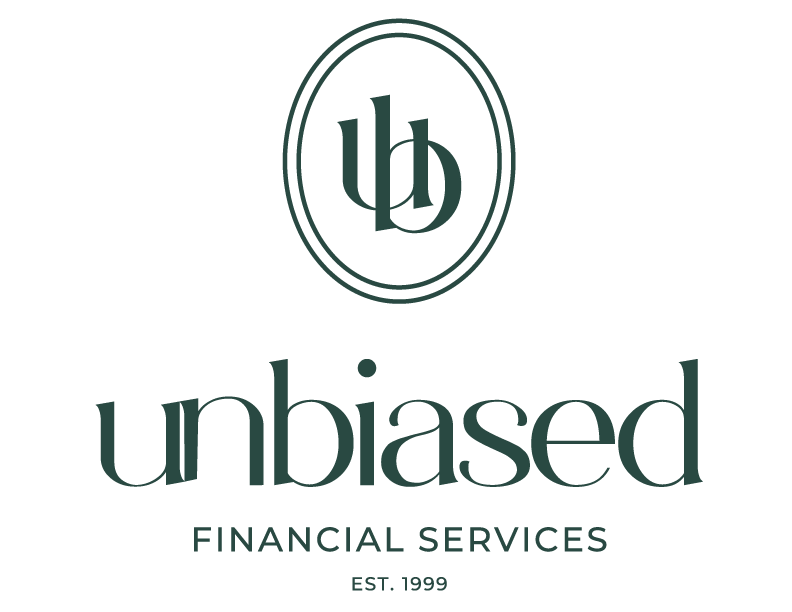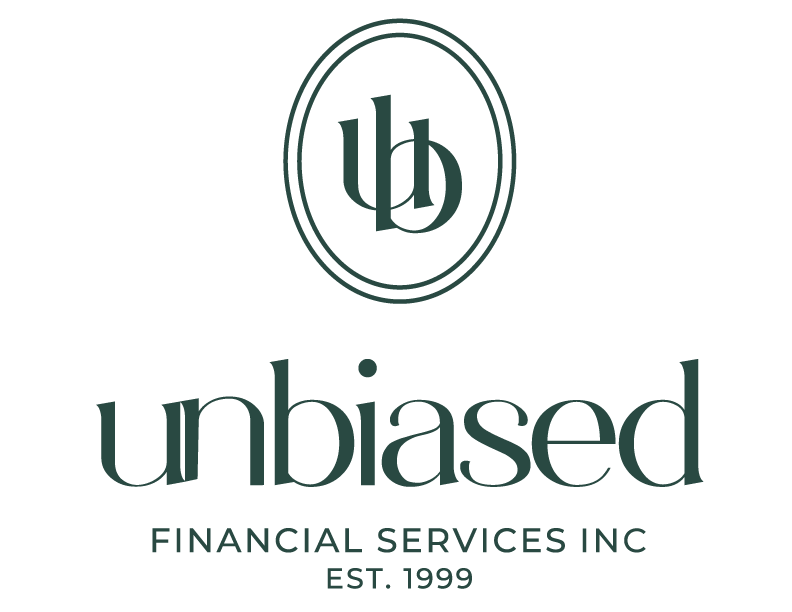Unbiased Financial BLOG

In this issue of the Exchange, we aim to explore the healthcare revolution fueled by artificial intelligence and what the likelihood of living longer means for client portfolios. We've seen it in the news, and there's no denying that artificial intelligence and machine learning are transforming healthcare. AI is accelerating drug discovery by reducing costs and speeding up development timelines, while identifying new uses for existing medications and expanding treatment options more quickly than ever before. This healthcare revolution supports the trend toward longer, healthier lives. And while Canadians are set to live longer, they are not typically looking to postpone their target retirement dates by a corresponding amount. Traditional retirement planning models, which have historically projected life expectancy in the range of 90-95 years, are at risk of underestimating the length of time your assets will be required to support you, assuming advances in medical technology drive life expectancy to >100. Historically, investors have associated portfolio volatility with risk; the larger the peaks and troughs, the greater the risk. As the world we live in continues to evolve, there emerges a new hybrid risk - one that can seem paradoxically at odds with our traditional understanding. Increased life expectancy, together with relentless debasement of fiat money, become a potentially critical risk that must be monitored acutely. 📉 The Risk That Feels Big: Market Volatility A sudden market drop is loud and immediate. You see red numbers, read doom and gloom headlines in the news, and feel a gut-level reaction. It’s normal. In fact, during these moments, your brain is flooded with stress hormones like cortisol and adrenaline. These are the same chemicals triggered by physical threats—our ancestors felt this way when fleeing predators. So, when your portfolio drops, even temporarily, your body treats it like an emergency. It can push you toward impulsive decisions like selling at a low point or abandoning your long-term plan. 🛒 The Risk That’s Often Ignored: Inflation & Loss of Purchasing Power Now think about your last grocery run. Prices are up—maybe noticeably—but you didn’t panic. You may have been frustrated, even annoyed, but not fearful. That’s the problem. Inflation creeps in slowly and quietly. Over time, it erodes what your money can buy—often without setting off alarm bells. But the compounding effect can be devastating. Here’s how the two risks compare: Market Crash Rising Costs / Inflation Feels urgent and scary Feels frustrating, but not alarming Triggers fight-or-flight Often met with resignation Usually short-term Long-term, compounding effect Easy to track daily Harder to measure, often ignored 💡 So What Can We Do? The key is to recognize and prepare for a trend towards longer life expectancies by: Exchanging one type of risk; the constant erosion of purchasing power - for another type of risk; in the form of individual security volatility. While we can't eliminate risk, we can be thoughtful about how best to mitigate risk in the context of financial planning & portfolio management. We will continue to have these conversations with clients during our fall meetings and welcome your thoughts as we discuss strategies that will support your 100-year life.

In a year marked by geopolitical uncertainty and market volatility, we have witnessed one of the most hated rallies ever. Immediately following April 2nd, fear and panic led retail investors - and even professional money managers - to liquidate their holdings and move to cash. At Unbiased Portfolio Management Inc., we work to maximize client preparedness ahead of time and ensure our portfolios are well-positioned to withstand unforeseen drawdowns, such as what we experienced in April. As markets can recover just as quickly as they can decline, we can understand why April is defined by many as the Most Hated V-shaped Rally. Those who panicked and sold have suffered a permanent loss of capital. Those who held fast are rewarded with the S&P 500 reaching all-time highs. During external turmoil, we understand that one of our primary roles is to ensure our clients are confident in their plan and that portfolios are well-positioned in shifting landscapes. We feel it is important to reiterate that volatility is normal – and that your plan is built to handle it. Included above is a visual covering the performance of the bear market, bull market, and S&P 500 price index over periods ranging from 1926 to 2022. Overall, bull markets tend to last longer and deliver substantial returns, when compared to bear markets that are comprised of shorter periods of negative performance. The notable resilience and upward trajectory of the stock market showcases the case for wealth accumulation by long-term holding strategies, despite periodic downturns. Proactive Risk Management: We are reassessing the traditional tools used to measure asset class volatility as assumptions applied to investment risk aversion become increasingly outdated. Those assets traditionally categorized as being “safe” are very slowly, but very steadily, taking on the characteristics historically attributed to risky assets. Our methodology is designed to address and mitigate potential risks before they can have a materially negative impact on your portfolio. Expanded Client-Centric Solutions: We are increasingly taking a holistic, multi-generational approach to wealth management that integrates financial and non-financial services tailored to each client’s evolving needs. Financial planning throughout retirement, gifting strategies, and digital asset inheritance planning are some of the ways we aim to support your family. Alternative Asset Education: As the world around us continues to evolve, we must always keep our head on a swivel to identify emerging investment risks and opportunities. With alternative assets becoming an increasingly important component of our portfolios, we are committed to the ongoing education process around the particular and unique characteristics associated with alternative investments. Our objective is that by implementing the above-noted approaches, among others, we increase client preparedness and confidence in anticipation of unexpected future events.

We understand many people are experiencing concerns regarding the state-of-the-market. It is difficult to watch the news lately and not feel some sense of trepidation. Shifting economic policies, tariff impositions, inflation concerns, and geopolitical uncertainty are all contributing to market volatility. While it doesn’t feel good in the moment, market corrections are a natural part of the investing cycle, as is their eventual uptick. History reveals the pattern of market recovery is remarkably consistent, with long-term market performance trending upwards over time. We have been through these times in the past; think of the 2001 dot-com bubble, 2008-09 financial crisis, 2014-15 Canadian energy collapse, 2020 Covid stock market crash. In each of these instances together we have stuck to our long term goals and policy targets, coming out in good shape on the other side. It would be prudent to address some of these concerns by asserting that year-to-date investment performance does not necessarily correlate with the spirit of present-day major news outlet reporting. We have ensured our portfolios are very well diversified, meaning that when some asset classes are under performing, other asset classes are there to provide ballast, and smooth out volatility. Having said that, when markets are off, it’s generally not a bad time to add to the portfolio, should circumstances permit. With the timing of market recoveries being notoriously difficult to predict, it is important to capitalize on opportunities where they exist. Several of the key policies recently implemented by President Trump could very well have the combined effect of reducing economic activity, decreasing the rate of inflation, and increasing the likelihood of a recessionary environment. Should inflation decrease and the economy cool, bond yields - particularly for U.S. Treasuries - will likely fall. Many investors, worried about economic uncertainty and stock market volatility, would flock to these government bonds, ultimately fulfilling two key objectives of the U.S. Government: reducing their own borrowing costs, and attracting buyers of government debt. The following are key Republican policy objectives that might contribute to such an outcome: Deporting 1 million people: Removing a significant portion of the American population means fewer people to pay rent, buy groceries, etc. As less people participate in the economy the aggregate demand for goods and services declines. Less demand means lower prices, leading to a slower rate of economic growth, disinflationary pressures, and lower bond yields. Reducing government waste and fraud through DOGE: Limiting government inefficiencies would ultimately reduce aggregate public sector spending. As the number of government jobs and services shrink, unemployment rises, and consumption decreases. This contributes to lower demand, leading to disinflation, and driving bond yields down. Tariffs on imports: Imposing tariffs will increase the price on foreign goods, and the average household will need to reduce consumption in other areas to adjust for higher prices. This would lead to lower overall demand in the economy as consumers think of delaying the purchase of a new car or home due to economic uncertainty. In summary, the U.S. Government is looking to reduce its overall cost of borrowing, and attract buyers of U.S. Treasuries. One way to achieve this objective is to scare investors - for lack of a better word - into buying more bonds, by disrupting the status-quo. On a positive note, looking forward, several key players including Treasury Secretary Scott Bessent, Commerce Secretary Howard Lutnick, and Energy Secretary Chris Wright, have repeated the metaphor of a “detox” - that is to prepare for short term pain in exchange for long term gain. Ultimately, the U.S. Government is looking to refinance their debt at lower interest rates, while simultaneously decreasing industry regulation and lowering income taxes. The hope is that these elements will combine to create a more productive economy, allowing for private business to achieve more growth using less inputs.

When contemplating financial risks, people will often reference downside indicators such as recession, job loss, decreasing housing prices, and declining stock markets. In these scenarios, the implication for those most affected is that they cannot afford to maintain their quality of life moving forward. Mark Moss refers to this as a "Crash Down." He then goes on to mention a unique term, or "Crash Up" scenario, where prices rise so quickly that people can't afford the same quality of life. Two different risk scenarios result in the same outcome. One example of the Crash up scenario can be observed when analyzing the housing markets of Toronto and Vancouver. For over a decade, many have predicted that housing prices were "too high" and would undoubtedly crash. In hindsight, we can see that although the housing market did indeed experience a crash, it was a "crash up," not down. Let's consider a young professional in his 20s living in Toronto, enjoying an annual salary of $100,000. Under a conventional "Crash" narrative example, this person might lose his job and immediately become reliant on Employment Insurance (EI) while searching for a new source of gainful employment. Consequently, his income would drop materially, and maintaining his previous lifestyle would become exceptionally difficult. While the above-noted example is often considered as part of a risk-management analysis, not many individuals dive into the risks of a "Crash Up." In this scenario, the young professional remains employed, and likely earns a higher salary over time, consistent with good work and corresponding promotions. However, all the while, housing prices soar from the equivalent of 4 X his income to 10 X his income (rising from $400,000 to $1,000,000)). Ultimately, although he now earns well over $100,000, he has been demonstrably priced out of the Toronto housing market. This situation represents a "Crash Up" as he can no longer sustain his former lifestyle as a tenant (rents being tied closer to the value of real estate than to salary increases) and most certainly cannot make ends meet should even qualify for an outrageously sized mortgage. The distinction here is significant; our young professional has experienced a crash, not not in the traditional sense - as it has been a very real "crash up." Too often, people are so fixated on the prospect of a crash down that they completely overlook the hidden dangers posed by a "Crash Up." On a positive note, there are ways to manage the risk of a crash up! The first and most important part is to identify this type of scenario as a possibility. From there, it becomes easier to contemplate various - and sometimes unorthodox - methods to address.

With another pleasant summer season behind us , we welcome the cooler fall temperatures and a return to more structured routines. Ours was a summer filled with the priceless, screeching laughter of our kids swimming at the Lake, a total of 10 nights camped out in a tent, and many, perhaps too many ice cream cones! Having fully recharged, September was a month in which to renew and refocus our dedication to work, with a sense of optimism and purpose very much directed towards the last Quarter of the year. We hope your summer was spent doing things you love with people who fill your bucket - and look forward to connecting in the fall! CELEBRATING 25 YEARS IN BUSINESS This November marks the 25th Anniversary of Unbiased Financial Services , and it is with immense gratitude towards our wonderful clients that we celebrate this milestone. Your trust and support have been instrumental in our growth and commitment to family-focused financial services. John started Unbiased in 1999 after becoming increasingly uncomfortable with how product-focused the financial industry had become. He wanted to advise families, not sell them products. And so, he exchanged his cushy office in Banker’s Hall for the bungalow basement on Oakcliffe Drive. Shortly thereafter, one night at the dinner table, Taylor and his sister Morgan were told they would be playing a new game over the next few years – called “The Savings Game”. It was when John came home one night after selling his beloved Westphalia to raise additional monies for computer hardware that we all recognized how very real the game was. It took John many years to accomplish what we think should be common place; for advisors to guide clients on what’s best for their family, and to think beyond their investment portfolios. He has spent a career rallying against industry norms to develop a family-focused, net worth planning model. 25 years later, the story has come full circle as John and his wife Nancy recently re-purchased a mint condition, 1989 Westphalia van , and can often be found on the road, travelling to their next campsite. FINANCIAL SERVICES TECHNOLOGY SOLUTIONS FOR THE MODERN INVESTOR Unbiased is fully committed to a chieving sustainable competitive advantage for the next 25 years. To that end, we recently made a significant capital investment in our data solutions software, moving from Captools to NDEX . You will recognize Captools as the software we historically utilized to generate Net Worth Reports. Captools served us very well over the years, but as the industry landscape continues to evolve, we find ourselves needing more technological horsepower, particularly with respect to data aggregation, security-centric applications, and portfolio analytics. We are currently running both programs in parallel with each other as we work towards migrating historical data over to the new platform. CONTINUING EDUCATION Consistent with an emphasis on maintaining the highest level of competency an professionalism in our field, we recently flew to Gatineau, QC to attend the 2024 Institute of Advanced Financial Planners Symposium. Throughout the course of the week, we digested a well-rounded program delivered by exemplary speakers. Topics included, but were certainly not limited to; “ Planning Implications of the 2024 Federal Budget” and “Observations about the Enhanced Canada Pension Plan”. Perhaps most important, all participants worked diligently each day on a Case Study, implementing knowledge gained in real time from the Symposium to fully optimize modern planning outcomes.

Our endeavor in rolling out this new medium of communication is intended to foster anexchange of ideas, by way of providing economic updates, market opportunities, noteworthy articles, and from time to time, a little bit about our firm. The image above details the scene of an English coffee house in the 17th century. In that era, English coffeehouses were places where people gathered to discuss current events,political affairs, and the natural sciences. For the price of a penny, customers were able to gain admission, and a hot “bowl” of coffee. The absence of alcohol fostered an environment that enabled more serious discourse and debate, when compared to the traditional setting of an alehouse. Indeed, English coffeehouses are now widely recognized as having played a crucial role in the chronicles of the Ageof Enlightenment. In 1698, the prices of stocks and commodities began to be “posted” in one suchcoffeehouse -Jonathan’s - located in Change [or Exchange] Alley, thereby becoming the first systematic exchange of securities in London. Economic Updates and Portfolio Changes We recently implemented two noteworthy trades within our model portfolios. The first was replacing ZEM BMO MSCI Emerging Markets Index ETF with XMA iShares S&P/TSX Capped Materials Index ETF. One opportunity that we see in the XMA buy, is thatgold mining stocks make up over 56% of the fund, and we’ve noted the gap that exists between current gold prices and current gold mining stock. The secondary rationale for holding XMA is our ongoing endeavor to offset the ever-increasing government deficits, with gold being a particularly effective response to fiat debasement. Yan’s research indicated a slow, steady, continual increase in risk associatedwith emerging markets, particularly as it relates to China potentially becoming “the nextRussia”, in terms of international sanctions and freezing of assets, where China could wellbecome“un-investible” in the mid-term should a particular set of geo-political scenariosunfold, and so we made the decision to exit ZEM. The other trade recently executed was replacing XEG iShares S&P/TSX Capped Energy ETFwith ZEO BMO Equal Weight Oil & Gas Invest ETF. Since purchasing XEG in December 2021, we have enjoyed a 107% total return on the position, including dividends. With moderate potential for downside risk [Based on RBC Capital Markets Research Report] we took the decision to capture the gains appreciated through holding XEG, but not exitCanadian energy entirely. And so we bought ZEO, the core intention being to continue our investment in Canadian energy, albeit with less downside risk. The increased stability associated with ZEO, whencompared to XEG, is derived both from its exposure to pipelines, but also via the equal weight methodology of the index itself (as opposed to market capitalization weight methodology).

